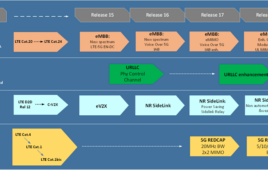It wasn’t too long ago that Barnes & Noble dropped the price of the Nook from $259 to $199, only to have Amazon immediately drop the price of the Kindle to $189.
Amazon’s announcement last week that the latest Wi-Fi only version of its hallmark Kindle device would cost just $139 – $10 less than the Wi-Fi-only version of the Nook – was further evidence that there’s all-out price war in the eReader industry.
With $99 eReaders like Copia’s sub-hundred dollar model poised to hit shelves, will Amazon or its counterparts in the eReader market consider content-subsidized devices to deal with their low-cost competition? It’s an interesting concept as a thought experiment, but the odds look against it.
Carriers subsidize phones to lure in customers, from whom they recoup their investment through contracts that are reinforced with early termination fees. If Amazon wants to offer an eReader on the cheap to undercut the competition, it would probably have to turn to content to subsidize the device since it’s not a service provider.
Amazon certainly has the fundamentals in place for a subsidized eReader offering. It has a dominant market share, a proprietary format that locks users buying Amazon eBooks into the Kindle and the resources to finance an aggressive move to undercut its competitors.
“Amazon’s business model looks like a mousetrap,” says Yankee Group analyst Dmitriy Molchanov. “They sell eBooks cheap and in a proprietary format, so once consumers have the Kindle, they can’t easily switch because the content won’t easily transfer to something like the iPad. They’re stuck buying Amazon books.”
This modus operandi could prime the pump for a subsidized business model for the Kindle, under which Amazon would sell the eReader at below cost in exchange for a user agreeing to purchase a certain number of eBooks. Think book club, but for eReaders.
Given the fact that any talk of content-subsidized eReaders is purely hypothetical, Molchanov isn’t totally convinced that the subsidized book club model is on the table for Amazon even though he expects to see more $99 eReaders come to market. He thinks that type of business model could be more likely for the Barnes & Nobile Nook, which has an advantage in brick-and-mortar retail stores.
“It’s an interesting concept because it looks like a bundle from the cable world,” Molchanov says. “Bundles are popular with consumers because there’s a perception that it’s a lower cost.”
Mike Shatzkin, founder and CEO of digital publishing consulting firm Idea Logical, is more sold on the idea of subsidized eReaders. “At least in theory, the sale of content could subsidize eReaders like the Kindle, Nook and Kobo,” he says. “As the price of eReaders goes down, it’s an opportunity for companies to use eReaders to sell more content.”
Shatzkin thinks that a subsidized eReader model would work best with publishers like Harlequin, whose female-oriented audience purposely seeks out books published by the company. Harlequin readers may be more willing to agree to buy a certain number of eBooks from the publisher in exchange for a cheap eReader, since they already tend to buy a substantial amount of Harlequin books every year.
A subsidized model for the Kindle might look something like the way AT&T subsidizes the iPhone. Customers buy the device at below-cost in exchange for a fixed two-year contract, or in the case of eBooks, a bundle of books. Though this business model seems viable in theory, it’s complicated by the fact that Amazon already sells some of its eBooks at a loss, making it difficult to use eBook sales to compensate for a loss on eReader sales.
Amazon may eventually hold so much of the eReader market that it can allow the price of eBooks to drift upward, but any price hike would be challenging from a public relations standpoint and is probably some ways off, says Molchanov. This could further dim the near-term prospects for a content-subsidized Kindle because for the model to work, eBooks would be have to be priced high enough to offset losses on the eReader.
Liza Daly, president of publishing software and strategy firm Threepress Consulting, says she’s surprised that Amazon hasn’t already rolled out a subsidized eReader for customers in its Amazon Prime program, which offers unlimited fast shipping for $3.99 on each eligible purchase for an annual membership fee of $79.
The program targets frequent Amazon.com shoppers and Daly believes there’s at least some overlap between Prime users and high-volume book buyers. Daly says such offers could become more viable as e-ink display prices fall well below the $50 mark, though she doesn’t expect to see subsidized eReader bundles in the near future.
The likelihood of low-cost eReaders with content bundles hitting the market is a bit questionable in the near term, to put it lightly. Aside from the fact that Amazon has given no indication that it intends to begin subsidizing the Kindle, it also maintains that its content and device businesses must be able to each stand on their own, which could preclude it from slashing Kindle prices to below-cost.
Dropping the price of its 3G-capable Kindle to $189 “has already turned out to be the tipping point for growth,” Amazon said in a statement to Wireless Week. If the company is able to maintain its considerable market share against other eReaders and encroachment from tablets, it won’t have any motivation to use more drastic measures like subsidies.
For now, companies like Barnes & Noble, Borders and Amazon are focused on selling content, the real money maker in the eReader business. Forrester Research analyst Sarah Rotman Epps expects at least one major eReader brand will drop its price to $99 by the end of the year, pushing the burden of making a profit onto eBook sales.
“Increasingly, profit will come from content,” Epps says. “In some ways, Amazon and Barnes & Noble are cannibalizing their existing business to gain market share for eBooks. It’s about getting a device into as many hands as possible so they can sell content on it.”




